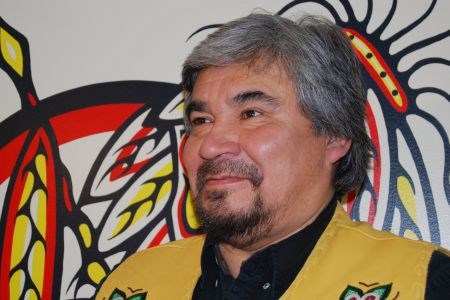Raymond Ferris hit the ground running in his new job.
He had barely settled into his chair as the new Matawa First Nations Ring of Fire Coordinator in late January when Marten Falls First Nation threatened to block all mineral exploration in the Ring of Fire until the mining companies signed memorandums of understanding and exploration agreements.
Within days, Cleveland-based mining giant Cliffs Natural Resources released the project description of its Black Thor chromite deposit in the James Bay Lowlands and its ambitious plans to start production by 2015.
But it’s nothing new for the 54-year-old Ferris, who is well-versed in Aboriginal and treaty rights as a former deputy grand chief for Nishnawbe Aski Nation, where he handled the mining and natural resources file.
As a former chief of Constance Lake First Nation, Ferris participated in a few blockades in his home community against mining and forestry companies. The concessations that were gained helped secure Aboriginal roadbuilding jobs and lead to the creation of a band-owned logging company.
Ferris knows what an effective bargaining tool blockades can be.
“Once people know they’ve been had, that’s the only thing that can resort to.”
In the months ahead, he’ll meeting with the three Matawa communities in the Ring of Fire to come up with a development strategy to secure exploration and impact benefit agreements with the mining companies.
Ferris sees his role as assessing what regional economic spinoffs and job creation opportunities are out there in mining, roadbuilding and infrastructure development. There is the potential to harness the Albany and Attawapiskat Rivers as hydroelectric sites to supply power to the mining companies.
“They’re saying there’s a lack of energy, we need to look at all that. Once (the North) opens up, there can be hydro projects, tourism and other things happening other just mining. We need to be prepared.”
Ferris works on behalf of the nine communities in the tribal council, especially those directly impacted by upcoming mine developments: Marten Falls, Neskantaga and Webequie First Nations.
He takes direction straight from the community level, extending up through the chief and council. “They put it on the table and we try to sort out how best to serve the common interest of the nine communities.”
Though headquartered in Thunder Bay, the Ring of Fire coordinator office is expected to grow into a network of community monitors to observe and scrutinize environmental baseline studies as advanced exploration proceeds in the Far North.
“We’re looking to build capacity from the ground up,” said Ferris.
Ferris stresses the importance of securing deals for the long-term. That only comes with “building capacity” and education in understanding the stages of the mining sequence.
Ferris said the pressure is always there to jump at the first job opportunity before any partnerships, labour service and benefit agreements are in place.
“Companies are offering jobs to the First Nations – and we’re appreciative of that – but we start to realize we should have gotten an agreement before we entered into this so we know where we are.
“Once the jobs are on the plate, it’s pretty hard to get your community members to go back and say we’ve got to start this (process) all over again.”
Ferris said it’s important that mining companies follow proper protocols for consulting with First Nations at every stage of the mining sequence. He accuses the Ontario government of “sitting on the sidelines” and not forcing the issue for all parties to come together and hammer out protocols and agreements.
Ferris admits he’s not comfortable with Cliffs’ 2015 start date for production.
“We want to conduct our own due diligence. We want to know what this mine is all about? What’s chromite and how can we be involved? Is ownership good or bad?”
“Our chiefs objected to the project description because we never had any input into it,” said Ferris. “We realize it’s a base case, but we’d like to be involved every step of the way in a true partnership.”




